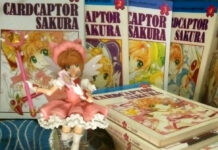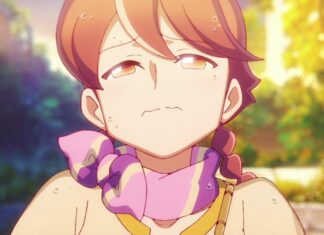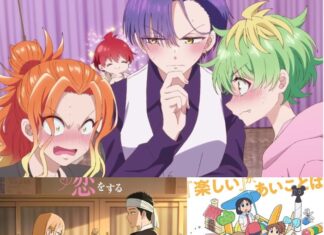Shoujo Manga Adaptations
If we are aware of the different media mix models related to magical girl, we can see that the 90s and the 2000s was an interesting period. What can be observed in this period was a boom of magical girl anime adapted from shoujo manga in the wake of Sailor Moon, as if there was a return to the early pattern of manga → anime adaptation → merchandise. From Wedding Peach to Cardcaptor Sakura to Tokyo Mew Mew to Shugo Chara, the narratives of these manga are still conducive to the production of narikiri goods in the development of their media mix. Cardcaptor Sakura even shows some kind of self-aware anticipation of the toys by having Sakura’s best friend, Tomoyo, the daughter of a toy company president, allowing her to provide support items such as mobile phones that are explained in the story as the company’s product prototypes.

As it has been previously mentioned, the toy company sponsorship model in the 80s established a way to produce series without the need to rely on the creations of the manga industry. So, the prominence of shoujo manga source materials in this period is curious to be investigated further. Of course, we can note that Sailor Moon offered something different from the original magical girl series that the toy company sponsorship model has to offer until the early 90s.
As Akiko Sugawa (2015) describes, Sailor Moon draws from the influences of various pre-existing media. It includes the transforming hero format of tokusatsu series like Super Sentai or even tokusatsu magical girl series like Poitrine. It shares a similarity with Akko-type magical girl with the heroine living as an ordinary girl before acquiring her power but also shares a similarity with Sally-type magical girl with the revelation that the heroine is a reincarnated moon princess. It is perhaps possible to hypothesize that while the toy company sponsorship model in this period has comfortably settled on the formulas that Minky Momo and Creamy Mami have refined, the manga medium provides relatively more freedom to experiment with new narrative formulas by bringing together influences from pre-existing media that make it possible for Sailor Moon to be created, with the result better struck a chord with audience of the era (Shimada, 2011: 182-186; Saito, 2014: 157).
It is also important to keep in mind that these manga adaptations were produced during a time when anime was gaining popularity in overseas markets. International distribution of anime adaptations of magical girl manga like Sailor Moon and their global successes can be credited for introducing the magical girl to a worldwide audience, and also in influencing how fans abroad understand and define what a magical girl is (Shimada, 2011: 125).
Closing: Magical Girl Anime Now
So far we have identified some major lineages of magical girl anime media mix, including shoujo manga lineage, toy company sponsorship lineage, and “magical girl” as a database element. Certainly, there must be magical girl works that do not fit neatly into one of these lineages, or maybe other media mix models that this article has not covered. For instance, this article doesn’t talk in detail about Toei Animation’s Majokko Series because other than sharing the same animation studio producing them, I find that they lack coherence as a group of works. Just see how some of them are manga adaptations while others are anime originals. And as this table in the Japanese Wikipedia that compares various media that feature them together can show, there isn’t even a consistent roster of works that belong to the Majokko Series. Certain works might be included in a song collection album but are missing from a video game. It indicates that the Majokko Series was only retroactively applied at a later time to label various old Toei Animation TV shows for girls, rather than something planned from the start.
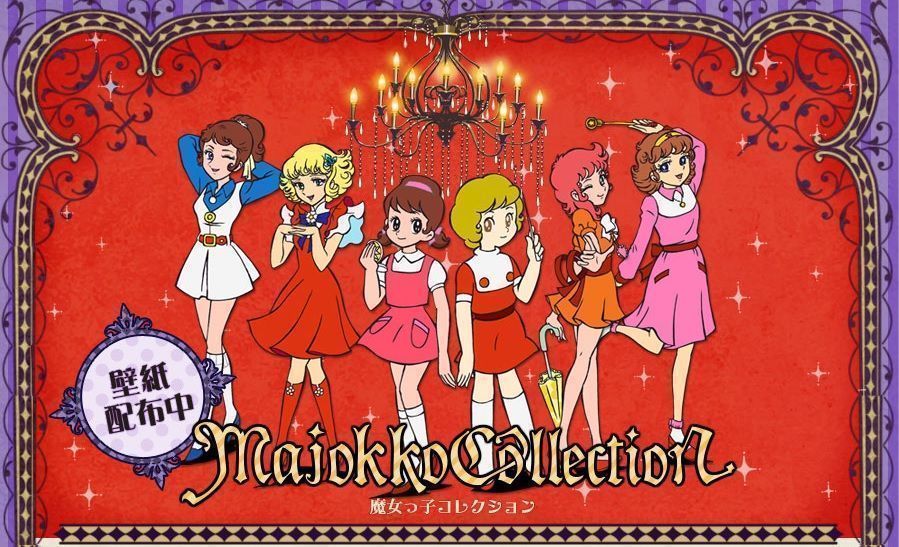
But otherwise, I feel the mapping that has been explored in this article is already useful enough to encompass a lot of things relevant to discussions about magical girl anime in the present day. In the toy company sponsorship media mix lineage, Pretty Cure is still going strong with the 20th series, Hirogaru Sky! Precure, coming up to air in 2023. Otaku-oriented media still draw from the “magical girl” database elements in various ways, and the emergence of stories featuring boys transforming into magical girls (Saito, 2014: 159-160; Sugawa, 2015) can perhaps be read within this lineage too. But the state of the magical girl in shoujo manga is less certain since there doesn’t seem to have been any new highly-popular magical girl shoujo manga series since Shugo Chara ended in 2010. In the decades after that, shoujo manga-based magical girl anime projects have mostly been revisiting past titles of the shoujo manga magazine Nakayoshi, including new Sailor Moon anime adaptations, the Cardcaptor Sakura sequel, and the new Tokyo Mew Mew anime.
This situation leads to the talk about magical girl anime for children dying out in contrast to the proliferation of otaku-oriented media that feature the “magical girl” database elements. Especially for foreign fans who were mainly introduced to magical girl anime from the works produced in the 90s and 2000s, it does appear like works like that are no longer made. Some people like anime YouTubers SecretIdentityStudio (2019) and Obvious Puppet (2022), and even Indonesian anime YouTuber Megane Sensei (2020), attributed this situation to the impact of Madoka Magica in incentivizing other creators to produce similarly “dark” and “depressing” themes. However, looking beyond story content, I have a different view of this situation. Let’s think instead about what Creamy Mami‘s producer, the late Yūji Nunokawa, had to say about the decrease of magical girl anime in an interview published in The Moe Manifesto (Galbraith, 2014b: 62):
Patrick Galbraith: Why did Pierrot stop making magical girl series?
Yūji Nunokawa: It was simply due to the declining number of children in Japan. The number of children is shrinking, which means the number of toy companies is shrinking and finally that there are fewer robot and magical girl series for children. There is only one major series for little girls at any one time now, and that’s enough.
From Nunokawa’s observation, we can bear in mind that the demographic situation in Japan in the present day makes it riskier to develop new magical girl anime for children, whether original or based on manga. Such an anime would have to compete in a limited market where there are already other established franchises, which has an advantage to just keep making new entries since they already have recognizable brands. Like with Pretty Cure, the alliance of corporate interests that produce it has already possessed a reliable formula that can continuously be repeated to produce new series consistently by changing the characters, world, and conflict with every new series. It might even also explain why the Japanese tokusatsu hero TV series in the present day mainly revolve around a few decades-old popular franchises; Super Sentai, Kamen Rider, and Ultraman.
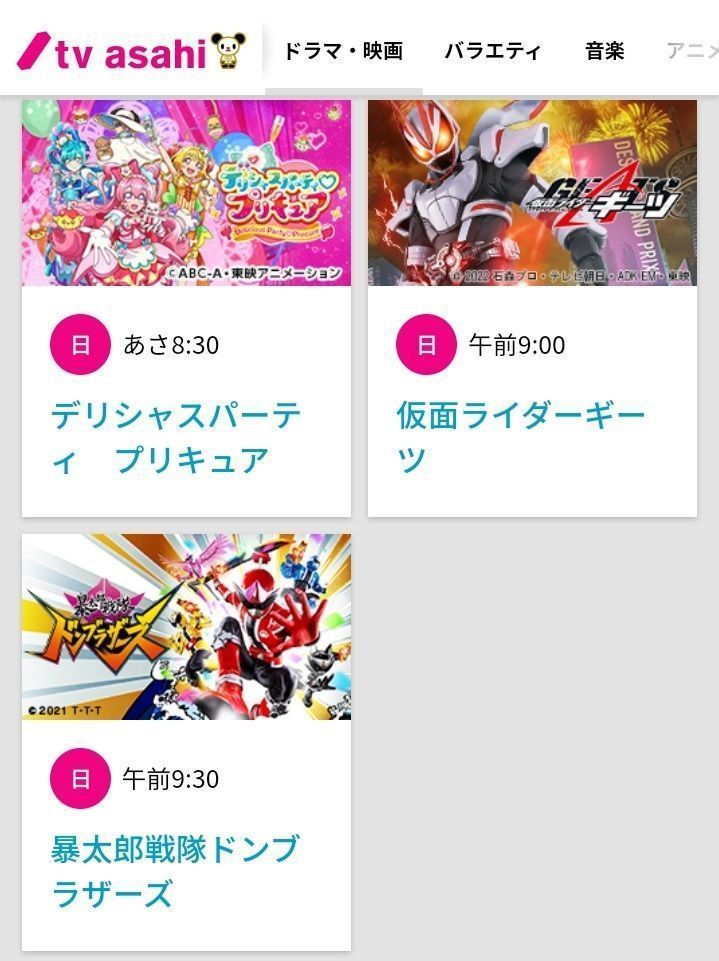
In summary, the development and maintenance of the magical girl genre rest upon the combination of factors including toy companies interested in selling narikiri goods for girls, creative workers willing and capable to make the heroine characters and the worlds they inhabit, broadcasters that need girls’ shows to be included in their children’s time slots, and last but not least, a population of children who would watch the shows and ask their parents to buy the toys. The genre arguably wouldn’t work the same if any of these components is missing. Japan may seem to have had the right convergence of these components, especially from the 80s to the 2000s, but as one of those legs is gradually weakening, it’s only to be expected that works like from that period aren’t as many as they used to be.
That’s all that I can cover in the scope of this article. Are there other series you know that can be discussed in the frame of these media mix models? Or are there other media mix models you are aware of that you want to share? Let me know if you have comments, suggestions, or criticisms.
The author would like to thank IAT staff member Caesar E.S. for his proofreading and suggestions.
References
- ー. HISTORY. Retrieved from https://www.nanoha.com/history/ on January 2, 2022.
- ー. 東映魔女っ子シリーズ. ウィキペディア. Retrieved from https://ja.wikipedia.org/wiki/%E6%9D%B1%E6%98%A0%E9%AD%94%E5%A5%B3%E3%81%A3%E5%AD%90%E3%82%B7%E3%83%AA%E3%83%BC%E3%82%BA#%E3%82%B7%E3%83%AA%E3%83%BC%E3%82%BA%E4%B8%80%E8%A6%A7 on January 1, 2023.
- ー.とらいあんぐるハート3 リリカルおもちゃ箱. ウィキペディア. Retrieved from https://ja.wikipedia.org/wiki/%E3%81%A8%E3%82%89%E3%81%84%E3%81%82%E3%82%93%E3%81%90%E3%82%8B%E3%83%8F%E3%83%BC%E3%83%883_%E3%83%AA%E3%83%AA%E3%82%AB%E3%83%AB%E3%81%8A%E3%82%82%E3%81%A1%E3%82%83%E7%AE%B1 on January 2, 2023.
- ー. (2010). 新房昭之✕虚淵玄✕蒼樹うめ✕シャフト 1大プロジェクト始動. Megami Magazine, Vol. 127, 115.
- ー. (2022). NARIKIRI TOYS HISTORY. NARIKIRI WORLD. Retrieved from https://toy.bandai.co.jp/series/narikiri-world/history/ on January 1, 2023.
- Azuma, H. (2009 [2001]). Otaku: Japan’s Database Animals. Translated by Jonathan E. Abel and Shion Kono. Minneapolis: University of Minnesota Press.
- Crunchyroll. (2020). History of Magical Girls (Sailor Moon, Puella Magi Madoka Magica, Cardcaptor Sakura + MORE). Retrieved from https://youtu.be/VtFR8o9n4LA on January 1, 2023.
- Donaldson, S., & Jing, J. (2021). The Enduring History of Magical Girls. Anime News Network. Retrieved from https://www.animenewsnetwork.com/watch/2021-06-04/the-enduring-history-of-magical-girls/.173513 on January 1, 2023.
- Galbraith, P. W. (2014a). Interview with Toshihiko Sato: On Magical Girls and Male Fans (Part One): A Different Sort of Heroine. In Galbraith, P. W. The Moe Manifesto: An Insider’s Look at the Worlds of Manga, Anime, and Gaming, 46-53. Tuttle.
- Galbraith, P. W. (2014b). Interview with Yūji Nunokawa: On Magical Girls and Male Fans (Part Two): Kindness Rather than Strength. In Galbraith, P. W. The Moe Manifesto: An Insider’s Look at the Worlds of Manga, Anime, and Gaming, 54-63. Tuttle.
- Hartzheim, B. H. (2016). Pretty Cure and the Magical Girl Media Mix. The Journal of Popular Culture, 49(5), 1059–1085. doi:10.1111/jpcu.12465
- Hikawa, R. (2013). Japanese Animation Guide: The History of Robot Anime. Mori Building Co., Ltd.
- Ito, G. (2009). 萌え4コマいいカンジ?芳文社『まんがタイムきらら』編集部インタビュー. ぷらちな. Retrieved from https://web.archive.org/web/20100704073456/http://www.p-tina.net/interview/78 (archived) on January 2, 2022.
- Kishikawa, M. (2022). A History of Magical Girls. – and How the Beloved Genre Became So Popular. CBR.com. Retrieved from https://www.cbr.com/history-of-magical-girls-genre-popular/ on January 1, 2023.
- Maas, M.K. (2019). How toys became gendered – and why it’ll take more than a gender-neutral doll to change how boys perceive femininity. The Conversation. Retrieved from https://theconversation.com/how-toys-became-gendered-and-why-itll-take-more-than-a-gender-neutral-doll-to-change-how-boys-perceive-femininity-124386 on January 1, 2023.
- Manry, G. (2011). Interview: Atsuhiro Iwakami. Anime News Network. Retrieved from https://www.animenewsnetwork.com/interview/2011-09-07/interview-atsuhiro-iwakami on January 2, 2022.
- Megane Sensei. (2020). Mahou Shoujo kok Sadis? Salahin Madoka Magica #MeganeTalk. Retrieved from https://youtu.be/tWzZIMiIONs on January 1, 2023.
- Nitroplus. (2007). 虚淵玄 列伝. Retrieved from https://web.archive.org/web/20071229163719/http://www.nitroplus.co.jp:80/pc/staff/urobuchi/ (archived) on January 2, 2022.
- Obvious Puppet. (2022). How Madoka Magica Destroyed an Entire Genre. Retrieved from https://youtu.be/ojULfIuyK20 on January 1, 2023.
- Saito, K. (2014). Magic, Shōjo, and Metamorphosis: Magical Girl Anime and the Challenges of Changing Gender Identities in Japanese Society. The Journal of Asian Studies, 73(1), 143-164. doi:10.1017/S0021911813001708
- SecretIdentityStudio. (2019). Where Are The Happy Magical Girl Shows? Retrieved from https://youtu.be/6hC7QOtWcdE on January 1, 2023.
- Seven Arcs. (2019). Corporate Profile. Retrieved from https://web.archive.org/web/20210912032312if_/https://www.7arcs.co.jp/img/company/Sevenarcs_Corporate_Profile2019.pdf (archived) on December 31, 2023 .
- Shimada, A.S. (2011). Representations of Girls in Japanese Magical Girl TV Animation Programmes from 1966 to 2003 and Japanese Female Audiences’ Understanding of Them. PhD Thesis, University of Warwick.
- Steinberg, M. (2012). Anime’s Media Mix: Franchising Toys and Characters in Japan. University of Minnesota Press.
- Sugawa, A. (2015). Children of Sailor Moon: The Evolution of Magical Girls in Japanese Anime. Nippon.com. Retrieved from https://www.nippon.com/en/in-depth/a03904/#
By Halimun Muhammad | The author is a senior staff at The Indonesian Anime Times


